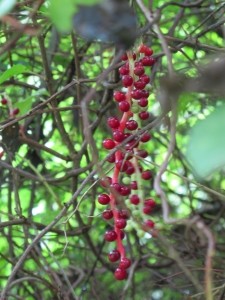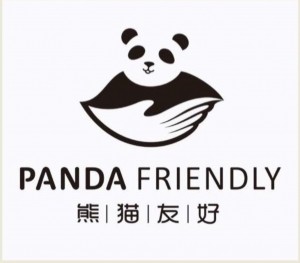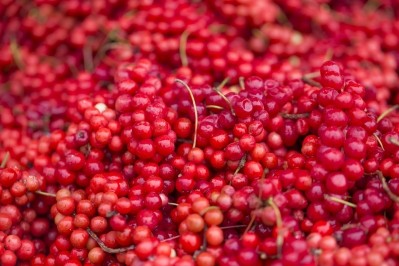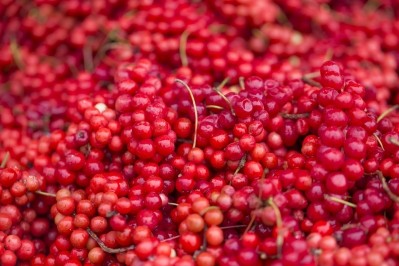Panda-friendly Schisandra: Project provides blueprint for sourcing botanicals in ecosystems with endangered animals

Popularity of the little red berries is increasing, spurred on by rising interest in adaptogens. “Southern” Schisandra (Schisandra sphenanthera), like its “northern” cousin Schisandra chinensis, has been used in Traditional Chinese Medicine (TCM) for centuries. But the plant’s habitat overlaps with that of the iconic giant panda. According to the World Wildlife Fund, there are an estimated 1,684 pandas in the wild, a number that has increased by more than 16% since the previous Chinese government survey in 2003. The animal is endangered by low reproductive rates and fragmented habitat.
Concerns over conservation and sustainability led to launch of the EU-China Biodiversity Programme in 2007, implemented through WWF China, which ran for five years and received awards from various Chinese State Ministries and programs of the United Nations.
California-based Traditional Medicinals had helped to demonstrate the feasibility of a managed harvest model in Daping Village in Pingwu County of Sichuan Province during 2008–9. The company subsequently committed to continuing its support for the program’s aims, and joined with a local cooperative in Pingwu County of Sichuan Province and the Draco/Shanghai Tian Yuan Botanicals Products Company to increase the supply of sustainably harvested Schisandra sphenanthera fruit.
The successes of this initiative ten years on are described in a new paper in the Journal of Ethnopharmacology. Led by Josef Brinckmann, Research Fellow at Traditional Medicinals, the authors describe how the initial program eventually led to Chinese government authorization of the FairWild Standard in 2016 as a certifiable international standard in China and the Standards for Giant Panda Friendly Products in 2017 as an official Chinese national standard.
“The eventual ability of TCM producer organizations to export sustainably wild-collected medicinal plants, that are value-added with organic wild, FairWild and panda friendly certifications, will be traceable back to this project,” wrote Brinckmann and his co-authors.
A transferable model
Brinckmann told NutraIngredients-USA that the newly published paper demonstrates that, “it is indeed possible, and furthermore suggests that it may be necessary, to protect the habitats of endangered animals in order to establish sustainable forest management and harvesting systems that are designed to support long-term survival of both the plant and animal species in the habitat.”
A decade after that initial pilot study, annual harvests are steadily increasing and 22 villages in the panda habitat are now engaged in the sustainable resource management, harvesting and equitable trade of TCM ingredients. These ingredients would potentially qualify for “organic”, “FairWild”, and “panda-friendly” branding.
“I believe that the model we tested for Schisandra in the giant panda habitat is transferable to other botanicals occurring in other ecosystems where other endangered animals live,” he added.
“I believe that sustainable sourcing of botanical ingredients in the future will need to incorporate concerns of people, plants and animals. So this is a start in the needed direction.”
Incentivizing the local communities

One of the key issues for success of such programs is the engagement with the local communities.
“Of course such systems require people to manage them, and people may need incentives to compensate for the hard work required of effective ecosystem management,” said Brinckmann. “That is where the FairWild Standard toolbox can provide solutions. If rural communities can reliably earn additional household income supporting biodiversity conservation through following the guidelines for sustainable wild collection of medicinal plants, socially responsible businesses and conscious consumers can also do their parts by paying the relatively small price premium that is needed to help assure continued protection of sensitive ecosystems, from where many botanical ingredients are sourced.”
Brinckmann added that, at the start of the program, they used various standards and guidelines but found over the years that no single existing sustainability standard covered all of the bases when the habitat included an endangered or threatened animal. Other expertise was needed and additional criteria had to be added to the overall management plan.
“That is why experts in panda biology and habitat were needed in the schisandra project, which led to the development of the giant panda friendly products standard,” he said. “Even though the standard was developed in the context of this one project, it became of national interest leading to its eventual (recent) establishment as an official Chinese national standard with accreditation of an inspection and certification body for audits and certification.
“I believe that it is also important to keep in mind that some of us in the natural products sector are concerned with issues of perhaps greater importance than merely sustainable ingredients, products and trade. Sustainable harvesting, use and trade is a vehicle.
“We are exploring theories of how socially responsible businesses and individuals can play an active role, in collaboration with policy makers and nature-conservation organizations, to preserve what is left of the natural world for future generations. Loss of biodiversity, in and of itself, is a serious existential risk.”
Biodiversity conservation
The Standards for Giant Panda Friendly Products was authorized in 2017, and as such industry awareness about panda-friendly is probably still relatively low, said Brinckmann, but that will change.
“The panda-friendly initiative is just one example (of many) that may help illustrate the overall issue of linking the protection of endangered and threatened animal species and their habitats to a sustainable botanical supply chain and viable rural economies,” he said.
“For continued access to ever-increasing quantities of botanical ingredients, this means that industry leaders must be deeply concerned with biodiversity conservation, whether their botanical ingredients are obtained from sustainable agriculture systems or from sustainable wild collection systems.”
To read more about the project on the Traditional Medicinals website, please click HERE.
To read an in-depth article from 2010 by Anthony Cunningham and Josef Brinckmann published in HerbalGram 85, please click HERE.
Source: Journal of Ethnopharmacology
Published online ahead of print, doi: 10.1016/j.jep.2018.05.042
‘Sustainable harvest, people and pandas: Assessing a decade of managed wild harvest and trade in Schisandra sphenanthera”
Authors: J.A. Brinckmann et al.


















